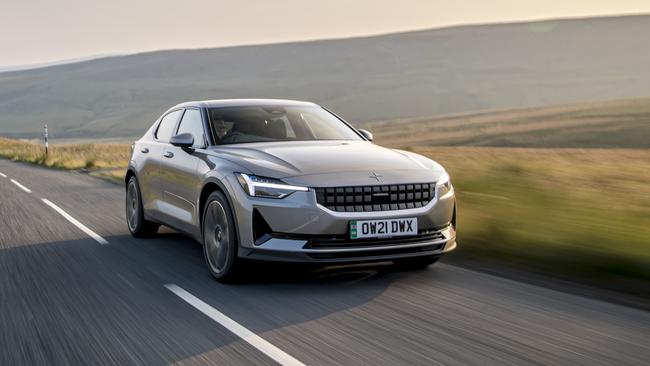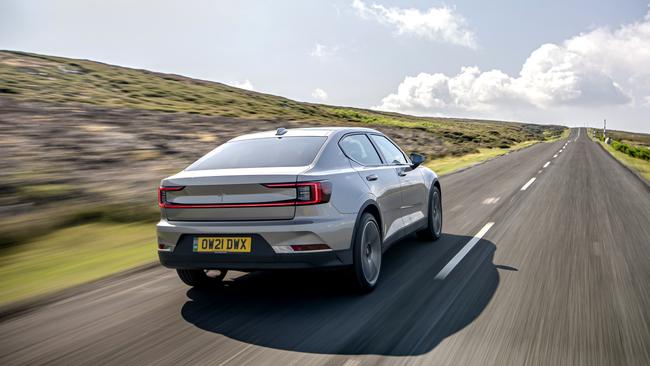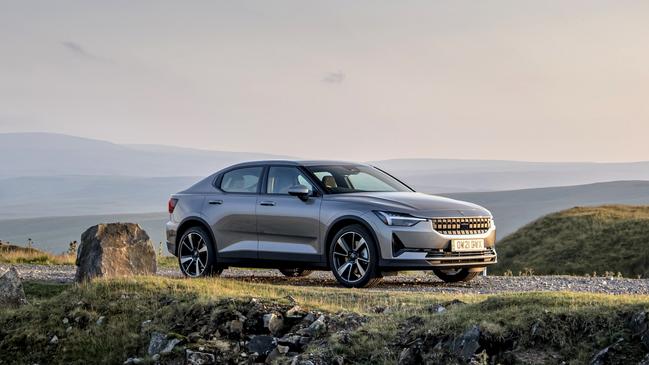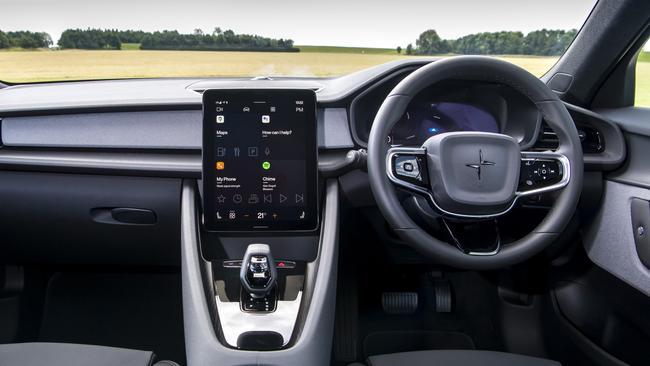Polestar 2 review: Electric car brand arrives in Australia this year
Latest European brand set to arrive on our shores brings style and flair to a segment that is expected to explode in the next few years.

Luxury
Don't miss out on the headlines from Luxury. Followed categories will be added to My News.
Can 2 equal 3? That is the question for Australians considering an EV, as the arrival of the all-electric Polestar brand looms.
Based in Sweden but owned by China, Polestar plans to open its doors in Australia late this year. Deliveries to customers should begin early next year.
The name of the car that launches the brand here is Polestar 2. It’s a natural competitor for the Tesla Model 3, by far the best-selling EV in the country.

With the three-model Polestar 2 line-up already on sale in some parts of Europe, we grabbed an opportunity to taste test the trio in Switzerland.
Though a little shorter and narrower than the Model 3, the 2 is slightly taller. This means the five-seat Polestar has a different, less aerodynamic look. It also has a large liftback, while the Tesla has a small boot lid.
But there are a lot of similarities, too. The three-model Polestar 2 comes in dual-motor and single-motor versions, and two battery capacities. So does the Model 3.
While the power and performance of the Polestars is less than their obvious Tesla equivalents, the 2’s battery pack capacities are in the same ballpark.

Even so, the Model 3 can drive further on a fully-charged battery, according to the WLTP range test standard.
But the Polestar 2 should be competitive in the most important comparison of all when it comes to choosing an EV – cost.
Australian prices for the Polestars are still to be decided, but in Europe the 2 undercuts the Model 3. Buyers would, however, need to buy three option packs – called Performance, Plus and Pilot – to bring the 2 up to equipment parity with the Model 3.

Even so, the Polestar has the potential to challenge Tesla on affordability. Model 3 drive-away prices start from about $65,000 and range upwards to about $93,000.
There’s one area where the Polestar is superior. Though the 2 is manufactured in China, it’s designed in Sweden. With its minimalist look, the interior has a very Scandinavian feel that beats the Tesla for design class and material quality. It’s vegan, too.
The rear seat isn’t especially roomy, but the rear cargo compartment is big. There’s also a small compartment under the bonnet, perfect for storing the cables most EV owners carry, or some small bags.

The first thing you notice from the driver’s seat is that the steering wheel is a Volvo design, but wears a Polestar logo its centre.
Volvo bought Polestar in the 1990s and turned it into its high-performance road car division. After Volvo was bought by Chinese carmaker Geely, Polestar became an electric-only sub-brand and was given a degree of independence.
It’s still reliant on Volvo/Geely technology, though, so the 2 shares many under-the-skin components with the popular XC40.
The motors of the top 2 deliver a maximum of 300kW. It’s seriously quick and has effortless shove, although a slight whining noise was often audible.

The middle model has the same 78kWh battery pack, but only one motor. Max power is 170kW, and it drives the front wheels. It has the longest driving range; 540km compared to 480km for the faster dual-motor 2.
With its smaller 64kWh battery pack, the least costly Polestar 2 has a 440km driving range, very close to the 448km claim for the cheapest Model 3. The single electric motor driving the Polestar’s front wheels maxes at 165kW.
Though the front-drive Polestar 2 models lack the outright oomph of the dual-motor variant, the handling character of the three is similar. All ride quite firmly.
Still, it works pretty well. The steering is precise enough and the Polestar feels agile and eager. Using the big portrait-oriented centre screen, drivers have a wide range of choices to set up the EV to drive the way they prefer. Regenerative braking levels and the degree of steering assist, for example, can be easily adjusted.
So, does 2 equal 3? In some ways – interior design and quality – the Polestar is a more professional piece of work. But in others – performance, range and energy efficiency – it doesn’t have the measure of the Model 3 range.
POLESTAR 2 STANDARD RANGE VITALS
Price: $65,000 (est)
Motor: 165kW/330Nm
Range: 440km
Battery: 64kWh
Safety: 8 airbags, auto emergency braking with vehicle, pedestrian, cyclist and road-edge detection support
0-100km/h: 7.4sec
Cargo: 405 litres rear, 35 litres front
Originally published as Polestar 2 review: Electric car brand arrives in Australia this year


